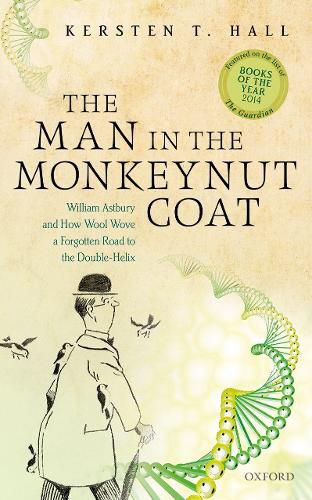Readings Newsletter
Become a Readings Member to make your shopping experience even easier.
Sign in or sign up for free!
You’re not far away from qualifying for FREE standard shipping within Australia
You’ve qualified for FREE standard shipping within Australia
The cart is loading…






Sir Isaac Newton once declared that his momentous discoveries were only made thanks to having ‘stood on the shoulders of giants’. The same might also be said of the scientists James Watson and Francis Crick. Their discovery of the structure of DNA was, without doubt, one of the biggest scientific landmarks in history and, thanks largely to the success of Watson’s best-selling memoir ‘The Double Helix’, there might seem to be little new to say about this story. But much remains to be said about the particular ‘giants’ on whose shoulders Watson and Crick stood. Of these, the crystallographer Rosalind Franklin, whose famous X-ray diffraction photograph known as ‘Photo 51’ provided Watson and Crick with a vital clue, is now well recognised. Far less well known is the physicist William T. Astbury who, working at Leeds in the 1930s on the structure of wool for the local textile industry, pioneered the use of X-ray crystallography to study biological fibres. In so doing, he not only made the very first studies of the structure of DNA culminating in a photo almost identical to Franklin’s ‘Photo 51’, but also founded the new science of ‘molecular biology’. Yet whilst Watson and Crick won the Nobel Prize, Astbury has largely been forgotten. The Man in the Monkeynut Coat tells the story of this neglected pioneer, showing not only how it was thanks to him that Watson and Crick were not left empty-handed, but also how his ideas transformed biology leaving a legacy which is still felt today.
$9.00 standard shipping within Australia
FREE standard shipping within Australia for orders over $100.00
Express & International shipping calculated at checkout
Stock availability can be subject to change without notice. We recommend calling the shop or contacting our online team to check availability of low stock items. Please see our Shopping Online page for more details.
Sir Isaac Newton once declared that his momentous discoveries were only made thanks to having ‘stood on the shoulders of giants’. The same might also be said of the scientists James Watson and Francis Crick. Their discovery of the structure of DNA was, without doubt, one of the biggest scientific landmarks in history and, thanks largely to the success of Watson’s best-selling memoir ‘The Double Helix’, there might seem to be little new to say about this story. But much remains to be said about the particular ‘giants’ on whose shoulders Watson and Crick stood. Of these, the crystallographer Rosalind Franklin, whose famous X-ray diffraction photograph known as ‘Photo 51’ provided Watson and Crick with a vital clue, is now well recognised. Far less well known is the physicist William T. Astbury who, working at Leeds in the 1930s on the structure of wool for the local textile industry, pioneered the use of X-ray crystallography to study biological fibres. In so doing, he not only made the very first studies of the structure of DNA culminating in a photo almost identical to Franklin’s ‘Photo 51’, but also founded the new science of ‘molecular biology’. Yet whilst Watson and Crick won the Nobel Prize, Astbury has largely been forgotten. The Man in the Monkeynut Coat tells the story of this neglected pioneer, showing not only how it was thanks to him that Watson and Crick were not left empty-handed, but also how his ideas transformed biology leaving a legacy which is still felt today.